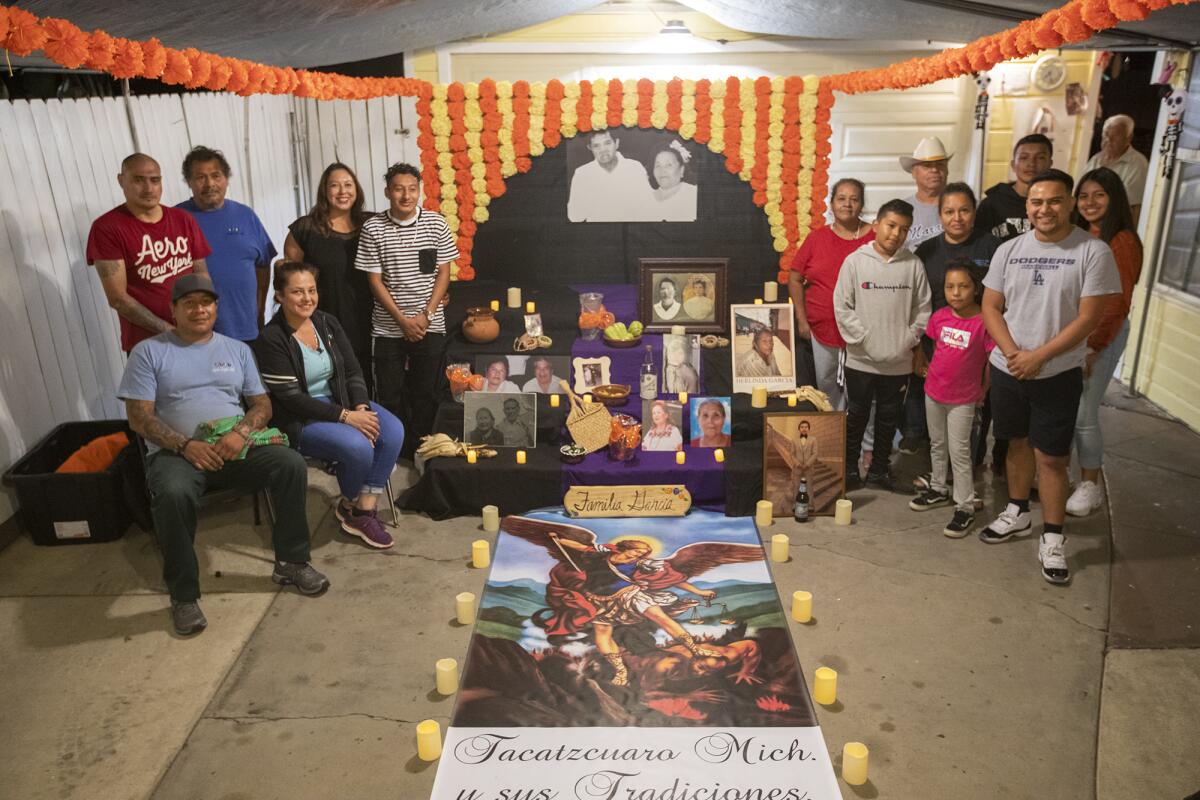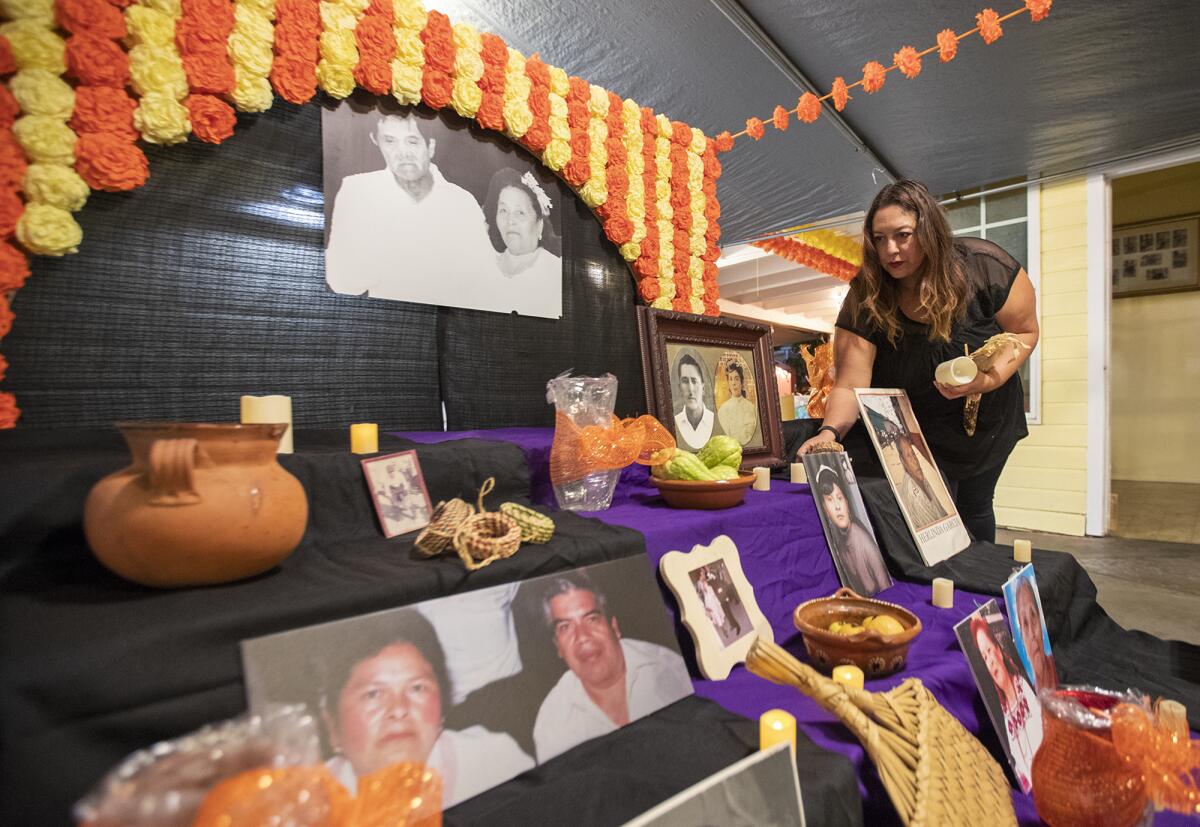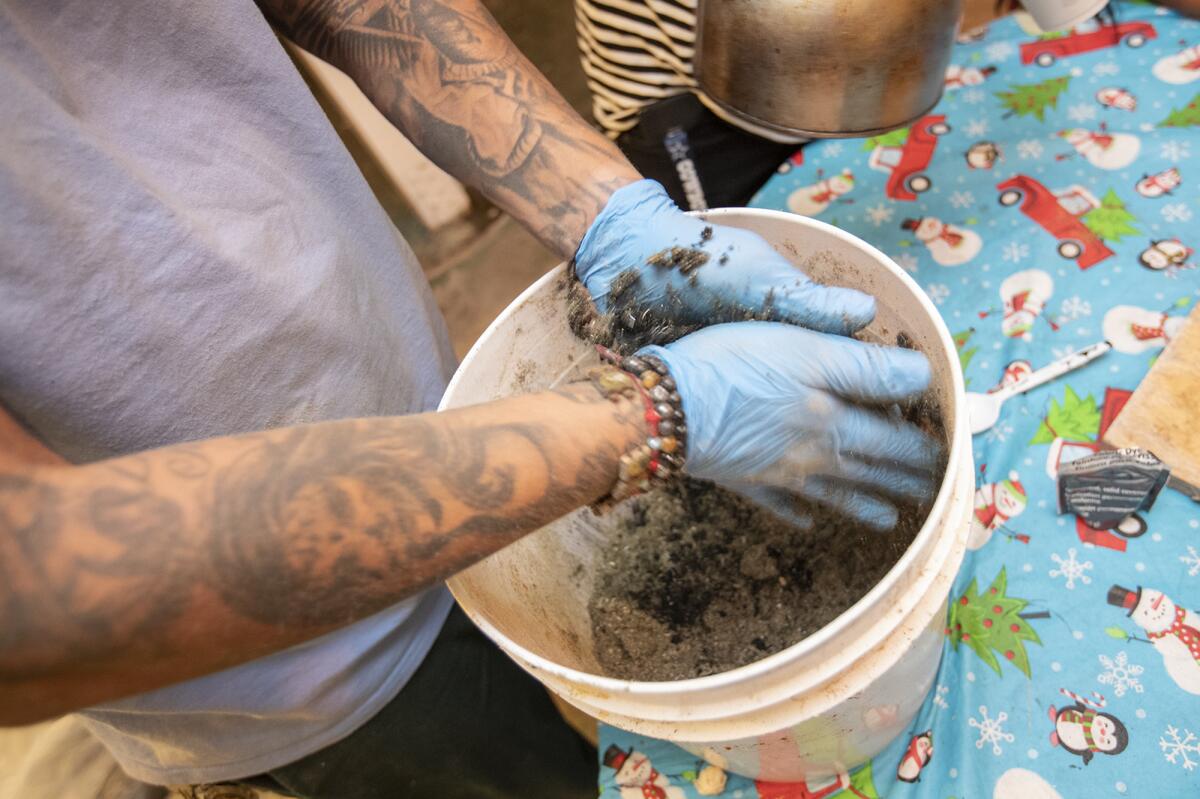Families memorialize the dead at the Night of Altars in Santa Ana

- Share via
Many of Nereida Prado’s family members are buried in Mexico.
So when it comes time to commemorate the dead each year Prado and about 50 relatives spend months preparing for Night of the Altars, or Noche de Altares, an annual tribute in Santa Ana.
“It is so important because most of the family can’t be in Mexico to honor our loved ones,” said Prado’s aunt Bertha Sarabia, as Prado translates. “This gives us a place to honor them.”
The family has been crafting altars since memorializing Prado’s grandfather 15 years ago for the event organized by Santa Ana’s El Centro Cultural de México.

The Nov. 2 gathering is part of the Day of the Dead festivities. The Prado family will display their altar alongside more than 150 others.
Planning is strategic. Members organize committees — flowers, streamers, materials fundraising — for each task.
Dozens of family members, many of whom live nearby, meet in Sarabia’s backyard, across from Memorial Park in Santa Ana, to plan and make the altars. Traditions are passed down from elder to adult to youth.
“There isn’t another time for their generation to teach us about what they have done,” Prado said. “We all learned how to weave, to put traditional mats on the altar. My grandfather made cowboy ropes. We will show the kids what he used to do with them. This is an opportunity for those things to be passed on.”

The family chooses altar features representative of the traditional practices of their deceased elders and the Mexican town from which the family is from, Tacátzcuaro.
This year, the altar includes weaved mats similar to those on which Prado’s grandparents once slept between shifts working in Mexican fields. .
All the kids in the family had to learn how to weave them,” Prado said. “Then they ended up selling them. It was one way the family made money.”
An important feature of the altar is a sawdust art piece. For this, Efrain Garcia, Prado’s cousin, will use colored sawdust during Night of Altars to recreate a picture of Michael the Archangel, the patron saint of the family church in Tacátzcuaro.
“During Christmas in the town they have these living altars, and they line the streets with different designs out of sawdust,” Prado said. “That is something we wanted to bring to the altar.”
Prado said others from Tacátzcuaro who have settled in Southern California flock to the altar to see their traditions represented and to pay their respects.
“This is part of not forgetting them,” Sarabia explained. “This is about keeping their memory alive every year.”
About 40,000 people are expected to attend Night of Altars — far more than the initial assembly 17 years ago. The event now includes traditional food, music and dancing.
An event hallmark is a procession led by La Catrina, a woman painted as a skeleton with a dark dress who lights altar candles.
La Catrina was created in the revolutionary period by the underclass to satirize the elite. The character exemplifies that all are equal in death.
IF YOU GO
What: Night of Altars
When: Noon to 9 p.m. Nov. 2
Where: Flower Street and Civic Center Boulevard, Santa Ana
Info: nochedealtares.org
All the latest on Orange County from Orange County.
Get our free TimesOC newsletter.
You may occasionally receive promotional content from the Daily Pilot.




